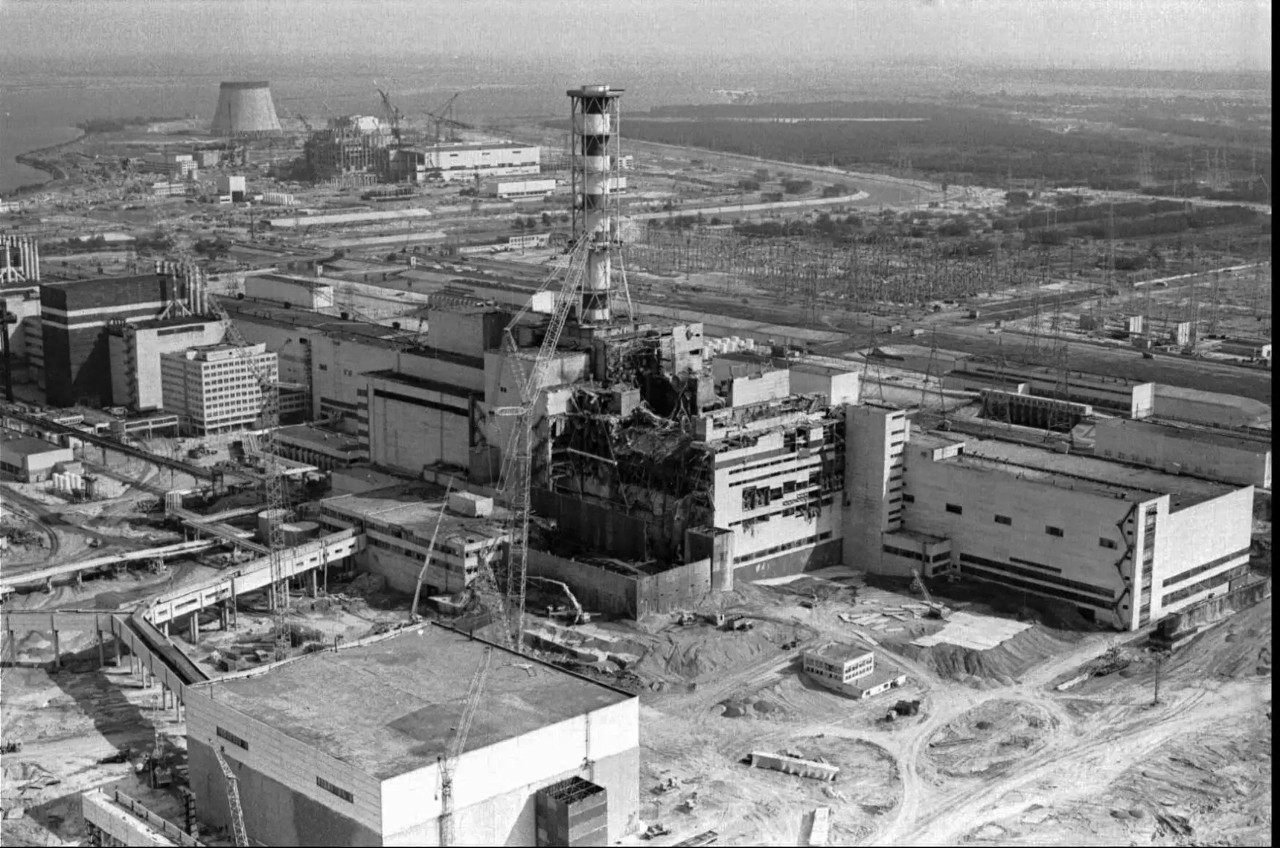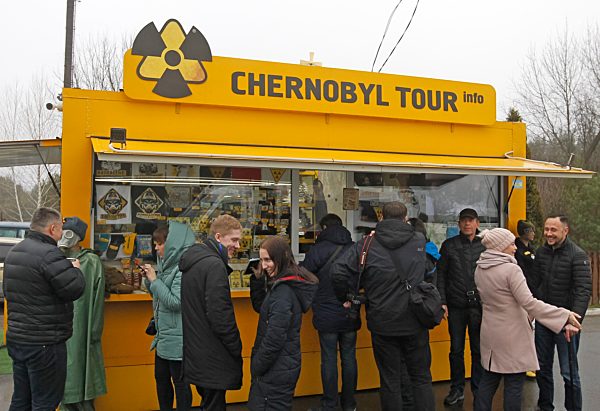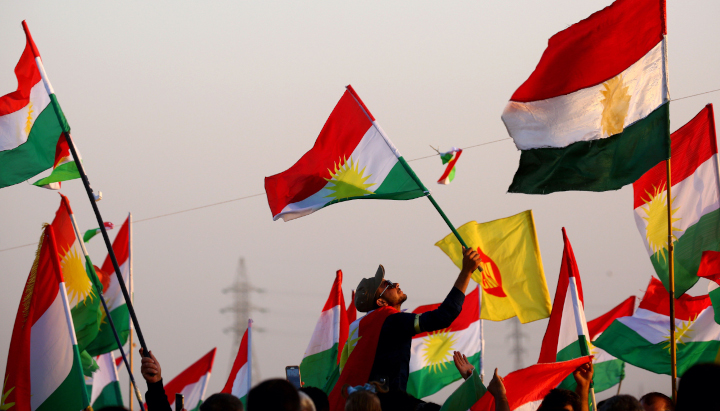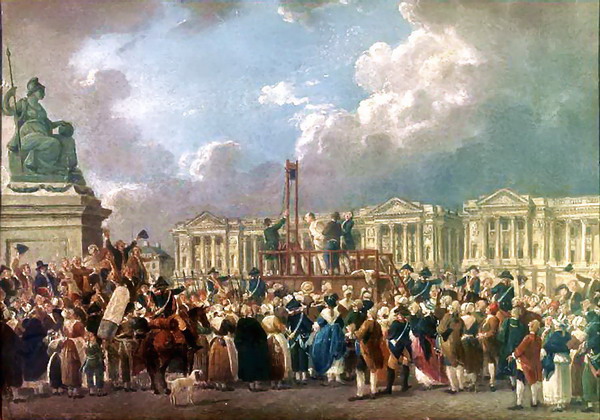The Chernobyl accident (Txornòbyl) was a nuclear accident, considered the worst in history occurred at the Chernobyl Nuclear Power Plant in Ukraine (then Soviet Union) on 26 April 1986. It is the first accident nuclear classified with a set (the highest level) to the international nuclear accident only achieved this, and the nuclear accident in Fukushima and 2011. That day, a sudden increase in power reactor number 4 Central, there was an explosion of hydrogen accumulated inside the nucleus by overheating during a test in which they simulated a power outage.
What happened in Chernobyl

Pripyat, near the center, 2011
There was a fire that lasted ten days. More than 800,000 “liquidators” were dedicated to “liquidate” the catastrophe, ending ill or killed most of them. More than 130,000 people were evacuated from the area, although some are the Most seniors who have decided to continue to live in their village life even radioactive contamination. It estimates that life expectancy in Ukraine, which was seventy-nine years in the last years of the Soviet Union, when the accident occurred, it would be fifty-five years in 2020 because of its effects.
Due to the lack of a containment building at the nuclear power plant is a dispersed plume of nuclear fallout in various parts of the Soviet Union and Europe, 60% of which about Belarus. 40% of total EU territory was contaminated with fuel dispersed into the atmosphere. Large areas of Ukraine, Belarus and Russia is seriously polluted, which caused the evacuation and resettlement of some 300,000 people living within thirty kilometers of the plant.
Currently the area is virtually uninhabited and covered by a thick layer of dust high in America and other highly radioactive nuclide. A group of technicians and engineers are still working despite the serious effects that know they inflict on their health, to control the area and try to preserve the European new waves of contamination, leakage and new accidents. Immediately after the accident the reactor was covered with a concrete sarcophagus, twenty-five years later began building a second confinement steel above this. The area will remain highly contaminated and considered uninhabitable for forty thousand years.
NPP

Tourists visiting the nuclear
The Chernobyl nuclear power plant (Чернобыльская АЭС им. В.И.Ленина – VI Lenin Memorial Nuclear Power) is Ukraine, 18 kilometers northeast of the city of Chernobyl, 16 kilometers from the border between Ukraine and Belarus and 110 km north of Kiev, the Ukrainian capital. At the time of the accident, had four nuclear reactors tubes powerful force RBMK of modern technology, which had started its operation between 1977 and 1983, each of which had a thousand megawatts of electrical power. The accident stopped the construction of two other reactors that were under construction. Contributed 10% of the primary energy in Ukraine. The central definitively stopped their operation when the accident occurred.
The reactor core was an immense cylinder of graphite 1700 tons, of which 1,600 within cylindrical tubes of metal and pressure-resistant housed 190 tons of uranium dioxide. To these tubes circulate water at high pressure in warm up, provided steam to the turbine wheel free. These behaviors were there other nuclear fuel tubes 180 phones, called “control rods”, steel and boron compounds, which were introduced in the container did reduce the nuclear chain reaction inside it. The reactor had no containment building.
The accident
In August 1986, in a report submitted to the International Atomic Energy Agency, explained the causes of the accident at the Chernobyl plant. This revealed that the team that operated on the ground on 26 April 1986 proposed a test conducted with the aim of increasing the safety of the reactor. To this should find out how long would continue generating electricity steam turbine once cut the steam supply. The emergency cooling pumps in case of failure, requiring a minimum of power to get up and plant technicians did not know what was the minimum. Once cut off the supply of steam turbine could know whether to keep the pumps running.
For this test, the technicians did not want to stop the reactor to avoid a phenomenon known as xenon poisoning. Among the fission products produced inside the reactor, is xenon-135, a gas with a high capacity to absorb neutrons. While the reactor is operating normally, there are many neutron absorption is minimal, but when the power is low or the reactor is stopped, the amount of xenon-135 increases and prevents the chain reaction by days . Only when the xenon-135 decays is when the reactor can be restarted.
The operators inserted the control rods to reduce the reactor power and this decreased to 30 MW. With such a low level, automatic systems can stop the reactor and therefore the operators disconnected the system of regulation of the power system emergency core cooling and other systems of protection. With 30MW xenon poisoning begins to avoid it increased the power of the reactor control rods to rise, but with the reactor about to go out, operators manually removed too many control rods. Of the 170 steel bars that had borate core safety rules required that there was always at least 30 bars downloads; this time leaving only eight bars downloads. With the emergency systems disconnected, the reactor experienced a rise extremely fast power that the operators did not detect in time. At 01:23, four hours after the start of the test, some of the control room operators began to realize that something was wrong.
When workers wanted to lower the control rods again, they did not respond because possibly already they were deformed by heat and disconnected to allow them to fall by gravity. Forts were heard noises and then an explosion caused by the formation of a cloud of hydrogen in the core, which blew the roof of one hundred tons of reactor causing a fire in the plant and a gigantic emission products Fission in the atmosphere.
Reactions
First reactions
Minutes after the accident, all the military firemen assigned to the power station were already on the way. The flames affected several floors of reactor 4 and approached the building dangerously where was reactor 3. The fire behavior during the first three hours of the accident avoided that the fire extended to the rest of the plant. Still, firefighters asked for help in Kiev due to the magnitude of the catastrophe. The operators of the plant put the other three reactors in emergency cooling. Two days later, he had very serious injuries eighteen hundred and fifty-six wounded medium injuries caused by radiation.
The first approach in helicopter demonstrated the magnitude of the catastrophe. The core exposed to the atmosphere, continued burning and emitting radioactive products. The temperature reached 2,500 ° C and in an effect chimney, it impelled the radioactive smoke to a considerable height. Likewise, officials of the region began to prepare the evacuation of the city of Prypiat and a radius of 10 km around the plant. This first evacuation began the day after massive and concluded thirty-six hours later. The evacuation of Chernobyl and a radius of 36 km is not carried out until last six days of the accident. Then there were over a thousand people affected by serious injuries caused by radiation.
Saturday morning, several Army helicopters were preparing to launch on the core material consisted of a mixture of sand, clay, lead, boron and dolomite absorbing neutrons. Boron neutron absorber prevent the occurrence of a chain reaction; lead was destined to contain the gamma radiation and other materials maintained united and homogenous mixture. When on May 13 ended missions, had been launched in the town about five thousand tons of materials.
He then began building a tunnel under the reactor to consolidate rugged terrain and keep the nucleus sank due to the weight of the materials released. In a week the tunnel was completed and began lifting a structure called “sarcophagus” that wraps the reactor isolating it forever outside.
It was designated a portion of territory, popularly known as “The Zone” in which thousands of people were evacuated and relocated, which can not grow or make other agricultural or industrial and which requires a special permit for in. Although the office is in Ukraine, the forbidden area includes areas of the country and Belarus. At the time of the accident directives advised to leave the area corresponding to a radius of sixty kilometers from the plant but finally this is as much as thirty kilometers.
Tests abroad
On April 27, several control stations in Sweden warned the high presence of highly radioactive dust on their territory and establish their origin as coming from the border between Ukraine and Belarus depending on prevailing winds those days. Similar measures were happening in Finland and Germany, which allowed the rest of the world know in part the scope of the disaster. Monday evening April 28, during the broadcast news Uremya, the presenter read a brief statement:
There was an accident at the Chernobyl power plant and reactors have been damaged. They are taking measures to eliminate the consequences of the accident. Is assisting those affected. Has appointed a government commission.
The leaders of the USSR had taken the fatal political decision not to give more details and to conceal the magnitude of the catastrophe. But the evidence against the 14 May General Secretary Mikhail Gorbachev decided to read an extensive report in which the late recognized the magnitude of the tragedy.
What happened at Chernobyl: Consequences
Human
The explosion caused the biggest catastrophe in the history of the exploitation of civil nuclear energy. Allegedly caused by the completion of a test at the time of the accident 31 people died and around 350,000 people had to be evacuated from affected 155,000 km2, remaining extensive areas uninhabited for many years. Radiation spread westward to Europe to France without crossing the Pyrenees, so in those areas of radioactivity indexes were above safe levels of radiotoxicity for several days. Expected to be released 500 times the radiation of the atomic bomb dropped on Hiroshima in 1945.
Just after the accident came from the main health problem Iodine-131 with a half-life of eight days. Currently, however, the main concern is the contamination of the soil with strontium-90 and cesium-137, with periods of half-life of about 30 years. The highest concentrations of cesium-137 found in the surface layers of soil, where it is absorbed by plants, insects and fungi and thus fall into the food chain. It is feared that radioactivity will affect the local population for generations.
In 2005, the IAEA produced the latest report detailing the number of deaths directly caused by the accident 59 people, 48 of them employees of the plant. The cases of thyroid cancer have been recorded more than 4,000. An estimated 600,000 people were affected by radiation, of which at least 3,500 will die as a result of it, including the majority of the 2,500 workers and soldiers who built the first concrete sarcophagus.
Another study obtained different results regarding Chernobyl. According to this, half a million people have died and the data supplied by Ukraine are not complete. This is the number of people (500,000) who would have lost their lives due to the radioactive cloud that was contaminating much of Europe. And others would die in the next 30,000 years. These evaluations show a significant difference with the investigations of the WHO and the IAEA. According to Greenpeace in total have been contaminated with cesium-137 30% of the areas in which they live nine million people. According to a technical scientific center of the Ukrainian government in Ukraine recorded cases of thyroid cancer, leukemia and genetic mutations that do not appear in the statistics of the WHO, which were virtually unknown twenty years ago.
Environmental

Levels of radioactive contamination ten years after the accident (only caused by cesium-137)
The first reactor of the Chernobyl nuclear power plant had one hundred ninety tons of nuclear fuel at the time of the accident. Some estimates calculate qua around 3.5% This was issued to the atmosphere but these data are not secure because various estimates put the amount of fuel delivered in figures incredibly diverse, ranging between 5% and 97% nuclide radioactive cesium-137 (which emits radioactive beta ), iodine-131 (radioactive beta) and tellurium-132 (radioactive beta) and to a lesser degree strontium-90 (beta radioactivity) and plutonium-141 (alpha radioactivity), among others, once released into the air not spread more evenly in concentrations concentric with the center at the plant, but with moving air masses as meteorology (atmospheric pressure, wind speed and direction, presence or absence of rain, etc. ) of the time, especially related to small solid particles (aerosols) of these air masses coming from the fire smoke, air pollution or present in nature. These can be arrested and accumulated encounter obstacles, such as a tree (which blocks the radioactive particles, preventing it from moving and radiation alpha and beta emitting, the range not) or a mountain, but the heat the fire caused the radioactive nuclide were released at high altitudes, which made it easier to shift without being unemployed over thousands of kilometers and almost reaching the Pyrenees.
Radioactive contamination spread by then mostly European and Asian continents waves of air bags generally more concentrated at the beginning of his career and disseminated, but also covering major areas, as they were advancing. There stood six waves, irregular shaped petals out of Chernobyl on April 26, 27 (two), 29 and 2 and 4 May.
Techniques
On the right, some modifications were made globally in basic reactor design. On the left, as a reference reactor scheme as before the accident. The most visible difference is that, since then, any type of reactor is enclosed in a concrete containment building (4) designed so that in case of explosion of the nucleus, the racioactivitat not leave him. This was nonexistent before, so many Chernobyl liquidators had made the subsequent accident. The other radical change was made to the design of the reactor vessel (2), which completely modified to avoid the causes of this explosion in Chernobyl. The moderator (1) was graphite, which is imflamable as Vandellos so was I, for example, and all gas reactors, which were considered too dangerous to pass closed: not currently n’opera towards world. The control rods (3) are mobile and the fact that dive into the reactors or remove them is controlling the nuclear reactions that take place, efforts have been made to this movement faster and more control subtle, fast and effective. They have even actually graphite, since it is known that in the first moments of his introduction he did was to increase the number of fissions. Until then it was considered that it was worrying, because after a while it compensated, but after the accident we stopped tolerating it, giving more importance to being able to act quickly and effectively in case of need a radical intervention.
The study of the causes of the accident was that the new designs of reactors and nuclear power plants around the world was different, taking into account other possible malfunctions and crashes, and imagining and impossant media appropriate to avoid them and active and passive safety measures so that, in the unlikely event that also had some of these incidents, minimizing radiation effects and will not pass to the outside. Existing plants that do not meet these new criteria were closed or adapted. In January 1993, the IAEA reviewed the analysis on the causes of the accident, attributing an error in the design of the reactor.
Across Europe, including the Catalan Countries, created a network of detection devices and control of radioactive pollution spread throughout the territory which allow observing and take the necessary measures in cases of accidents, leaks or any kind accident involving ionizing radiation in the atmosphere. Also to measure natural radioactivity, such as Catalonia or some distinguish between natural and artificial, which is also used to study modeling the behavior of air masses to help predict a aproximatixa way, similar to weather forecasts as it expands any kind of pollution, including radioactive.
In terms of environmental and health were major changes related securities dose (of radiation and other contaminants) who thereafter rules consider as admissible. They add normative criteria concerning pollution in general, such as dust (particles) that we now know that if they do not have immediate effects such as ionizing radiation on the body, they have one, and important , long run. They also modify the criteria considered “doses weak” criteria still in debate because they know every day with more certainty, that all small dose, for example, lead, causing an effect equal or even superior to Over the years that higher doses. For example, in 2011 the WHO does not consider any of his three million children officially territories contaminated by the accident. According to this organization, all develop different diseases of varying degrees of severity related to the weakening of the defenses. Environmentally since the accident is considered one knows for sure, and take necessary legal and technical measures, it is not possible to decontaminate a whole country after some incidents, ie it can never be like before he on the contrary, negative ecological consequences (genetic mutations, cancer cases, transmission of these generations later, etc.) increase, as they say themselves Ukrainians, “like a tree that grows.”
Politics
The Chernobyl accident was decisive for the start of the process of opening the Soviet Union to Western Europe by the end of the Cold War and perestroika.
In Italy the Chernobyl accident and the fact that radioactivity affecting the country led to the proposition of a referendum which asked if they wanted or not nuclear power from nuclear plants located in Italy. The referendum took place on 8 November 1987 and 80% of voters responded “no”, which led to the closure of the three plants were operating at that time in Italy. There was another building, which stopped, and there was one that had recently arrested a fifth. At the time, nuclear power accounted for only 4.5% of the primary energy produced in the country, compared to 24.5% renewable energy (of which 23% from hydroelectric and other solar and geothermal) and 71% of power plants. From 1986 to 2010 energy imports have doubled primary Italian (part of it comes from French nuclear power plants, if they have accidents can contaminate Italy, but instead the Italian government can not require them, for example, measures Restrictive security, more frequent and more thorough reviews, etc.), the percentage of renewables in their energy mix has not increased much (in 2010 the amount of primary energy from solar wind does not reach more than 3% and there is a 2% geothermal energy) and social anxiety by emissions of carbon dioxide from fossil fuels (used in thermal), plus the price of these has increased. This has made the Italian government of Berlusconi, which would build eight nuclear reactors PWR, has organized a new referendum on whether or not to return to have nuclear power plants scheduled for June 2011. The referendum was proposed before ‘Fukushima accident of March 2011.
Current situation
The accident happened at reactor 4 of the nuclear power plant, reactors 1, 2 and 3 of which were still running in 2001 and 2006 totaling more than six hundred tons of nuclear fuel. Currently there are still a million and half of radioactive waste, most of them outdoors, in the area.
The facility, despite being protected by concrete sarcophagus built after the accident, is not without serious risks of leaks and it is unclear whether it can support any new accidents, among other possible causes for the evolution of radioactive materials accumulated inside. For this reason, in 2006 was building a new steel confinement above the sarcophagus of concrete, but due to radioactivity, although a few tens of years after the accident, its construction has always problems . It is expected that, once solved numerous problems and finished construction, this will only be functional for a hundred years and we know that, although it will increase safety, can not fully completed at the risk of radioactive contamination from leaks and accidents . Will semicilindre flattened shape with hundred meters (“radius” of the cylinder), one hundred fifty depth (length of the cylinder) and two hundred fifty wide (“diameter” of the cylinder). It will be done with twenty thousand tons of steel. It has a planned initial cost of one thousand five hundred million, a hundred million more annual maintenance costs, which pay their taxes with four generations of Ukrainian descent.
The accident sparked debates on the use of nuclear energy in several European countries and even in some, such as Italy, it was decided to close all existing nuclear power plants. In Ukraine there was discussion but currently still have fifteen nuclear reactors and has planned to build its twenty-two more until 2030.
The Fukushima accident has had a negative consequence for Chernobyl because Japan was the country that had helped the region economically to recover from the accident and the aid is expected to go straight finish in the area of Fukushima. Surely the international community also leave Chernobyl to engage only in Fukushima, leaving Ukraine alone.
Popular culture
What happened in Chernobyl was a nuclear disaster that shocked the world on 1986 and the next years. This accident, in 1986, took place at a historical moment which struggled very strongly the use of nuclear energy for any purpose. He also had major political consequences, technological, social, etc. and opened new large collaborative projects and research. They met human stories that caused great impression, as the forgotten heroes called liquidators or the people who never wanted to leave the contaminated area. Also spread shocking images, some of which exceeded environments hitherto science fiction, the events, the central machines, the people, the countryside, the city, etc. This inspired many artists and creatives from all sorts of genres, including theater, film, comics, literature, music, video games (STALKER series, Call of Duty 4, Soviet Strike, etc.), videos, etc.
Examples include:
2010: Video clip of the song Sweet people, representing Ukrainian Eurovision and sung by Alyosha, was recorded in Chernobyl
2006: Ghost Town Song of Huns & Dr. Beek, in homage to the city of Pripyat now uninhabited
2001: Novel dragon of Pripyat, Karl Schroeder
1991: Movie Star Trek VI: The Undiscovered Country. It is set in a future “fictitious” which produces the destruction of primary energy producer Klingon empire, causing a major crisis that forced him to approach the Federation of Planets States. Is inspired by the Chernobyl plant, his accident and perestroika in the Soviet Union.
1991: Film Chernobyl: Last warning of Anthony Page
1987: Song Kiev, Barclay James Harvest, the album Face to face

